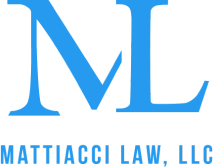Do I Have a Personal Injury Case in Philadelphia?

Dealing with serious personal injury case is daunting enough. Then there are the medical expenses, missed work, hence, lost earnings, the healing process, and changes to your daily life, among others. Naturally, you begin to wonder whether you can claim compensation for your damages via a personal injury claim or lawsuit.
Although there’s no substitute for legal advice pertaining to your specific situation, if you’ve yet to consult a Philadelphia personal injury attorney, it’s best that you have a clearer understanding of what a valid personal injury case looks like.
The Elements of a Philadelphia Personal Injury Case
Four main elements must be met to determine whether an injured individual has a valid personal injury case. These elements include the duty of care, violation of the duty of care, causation, and actual damages or losses.
Duty of Care
For example, all road users, including motor vehicle drivers, motorcyclists, bicyclists, and pedestrians, owe each other a legal duty of care every time they use the roadways. This is why all of them must follow the traffic rules. Similarly, property owners have a legal duty of care to visitors and anyone who visits their properties to make sure that their premises are reasonably safe and hazard-free.
In addition, medical professionals, like nurses and doctors, owe they treat and care for a legal duty of care. This means that medical professionals must always ensure that they provide reasonable medical care to all their patients and keep them from further harm.
Violation of The Duty of Care
If the individual that injured you owed you a duty of care, you must be able to prove that they violated that duty of care because they failed to act reasonably. In a car accident, for instance, perhaps that individual did something negligent or careless, like driving while they’re fatigued or texting while driving. Even if they didn’t mean to hurt someone, they may still be held liable for any injuries they cause for failing to act reasonably.
In some cases, the violation is so serious that it amounts to recklessness. This can include drunk driving, racing, aggressive driving tactics, etc. But courts will also take into account whether the injured victim contributed to the auto accident. For instance, you were driving on an unmarked road at night, and your lights were off, resulting in another car coming around the curve to crash into your car. In this case, your own negligence contributed to the crash, which might minimize the amount of compensation you can receive.
Someone’s Actions Caused Your Injuries
This means that you were injured because someone failed to act reasonably, and this failure caused your injuries. The liable party’s negligence must have directly caused the accident that resulted in your injuries. Again, if you have some level of fault for the accident, the compensation amount you can recover will be reduced.
To illustrate, let’s say that at an intersection, Tom turned left right smack into Jerry’s car. Jerry suffered severe facial injuries, brain injuries, and damage to his vehicle. Jerry’s damages or losses totaled $120,000. Following an investigation into the crash, the investigators determined that Tom failed to yield the right-of-way to Jerry.
However, an eyewitness testified that Jerry was using his mobile phone at the time of the car crash. The police then issued Jerry a ticket for distracted driving. Because of Jerry’s mobile phone use, the jury determined that Tom was 80% at fault for the crash, and Jerry was 20% at fault, as well. Jerry was then awarded $96,000, which is 80% (Tom’s level of fault) for the crash.
You Suffered Actual Damages
In order for you to recover anything from a personal injury lawsuit or claim, you must have suffered actual damages due to someone else’s negligence. Remember that the purpose of personal injury claims is for injured victims to recover compensation, whether for self and/or property. Hence, if there’s no injury, there’s nothing to compensate.
For instance, if Tom (see above example) did not yield the right-of-way to Jerry, but he did not crash into Jerry, Jerry wouldn’t have cause for a personal injury claim because he did not suffer any damages.
Talk to One of Our Skilled Philadelphia Personal Injury Lawyers Today
If you’re still uncertain whether or not you have a valid personal injury case that you should pursue, do not hesitate to reach out to Mattiacci Law, LLC for legal advice. You can discuss the incident or accident that led to your injuries with our skilled Philadelphia personal injury lawyers and find out about the best legal options specific to your case.
Fill out our online contact form or call 215-709-7915 to schedule a free case consultation with one of our Philadelphia personal injury lawyers today.
